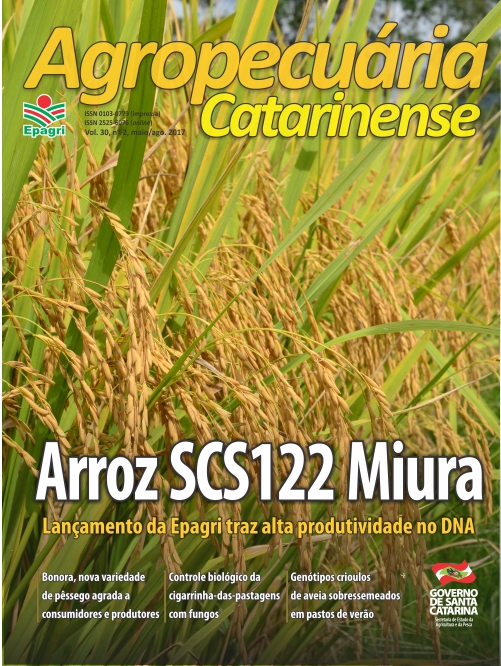Bacterium Xylella fastidiosa detected in olive trees in Southeast of Brazil
Keywords:
Olea europaea, olive dieback, vascular pathogen, transmission.Abstract
In 2013, there was an outbreak of a disease named “olive quick decline syndrome” in Italian olive groves, associated with the bacterium Xylella fastidiosa, which infects the plant xylem. Symptoms initiate as a scald on the leaf tips and may develop into a desiccation of branches, leading to plant death. In 2016, a similar disease was recorded in olive groves located in Southeastern Brazil, which is also associated with a X. fastidiosa strain. Olive cultivation has emerged over the recent years as a new agricultural activity in Santa Catarina. Healthy nursery plants obtained from trustworthy nurseries should be used for the establishment of new orchards in order to prevent introduction and spread of this bacterium.Metrics
Publication Facts
Reviewer profiles N/A
Author statements
- Academic society
- Epagri - Revista Agropecuária Catarinense
- Publisher
- Empresa de Pesquisa Agropecuária e Extensão Rural de Santa Catarina - Epagri
Downloads
Published
How to Cite
Issue
Section
License
Copyright (c) 2017 Revista Agropecuária Catarinense

This work is licensed under a Creative Commons Attribution 4.0 International License.





